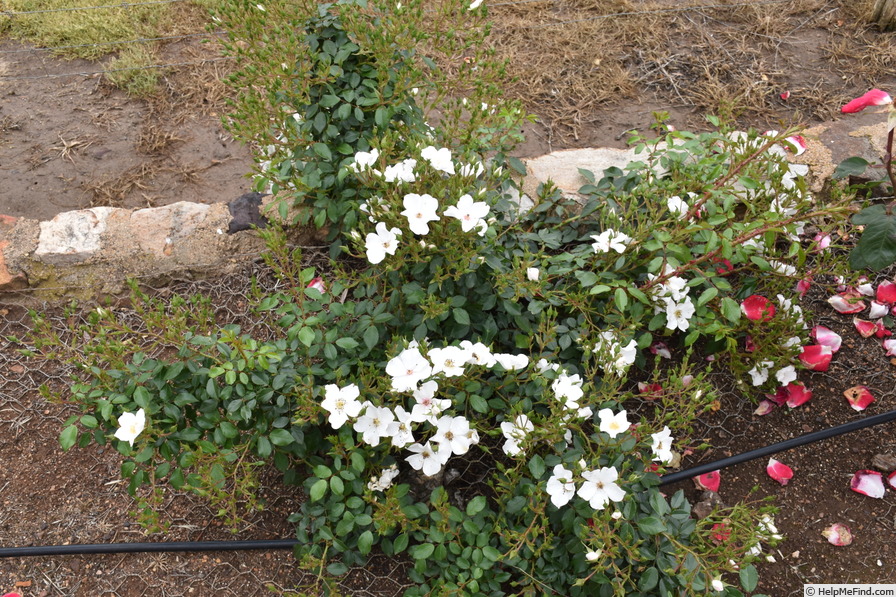|
|
'Heideschnee ®' rose Description

Photo courtesy of Johno
Bloom:
White or white blend. None to mild, spice fragrance. up to 5 petals. Average diameter 1.25". Small, single (4-8 petals), cluster-flowered, in large clusters, cupped-to-flat bloom form. Continuous (perpetual) bloom throughout the season. Small, pointed, ovoid buds.
Habit:
Short, spreading, suckers on its own roots. Small, glossy, dark green, dense, leathery foliage. 5 to 7 leaflets.
Height: 2' to 3' (60 to 90cm). Width: 4' to 6' (120 to 185cm).
Growing:
USDA zone 6b through 9b (default). Can be used for garden, ground cover or landscape. Very vigorous. Disease susceptibility: very mildew resistant, very rust resistant. Requires spring freeze protection (see glossary - Spring freeze protection) . Can be grown in the ground or in a container (container requires winter protection).
Patents:
Germany - Patent No: 1 137 666 United States - Patent No: PP 10,637 on 13 Oct 1998 VIEW USPTO PATENTApplication No: 08/918,423 on 26 Aug 1997 Wilhelm Kordes (Jan 1996)
Notes:
Ludwigs Roses says that if planted on a large embankment, 'Heideschnee' will make its own roots and assist in holding the soil. They also say that the rose breeders, Messrs W. Kordes, have made frequent use of the word heide when naming their roses. A heide is a landscape region in which Heather is the dominant indigenous plant growing and, in the case of this rose, the appearance is like snow in the open heather landscape.
[]
|